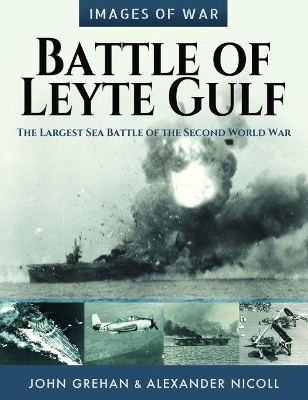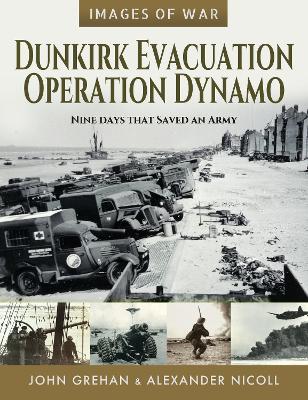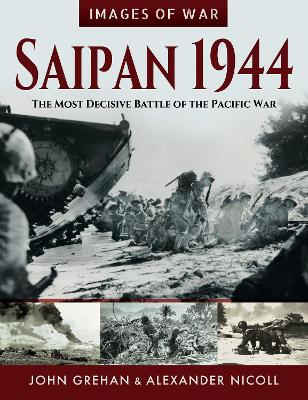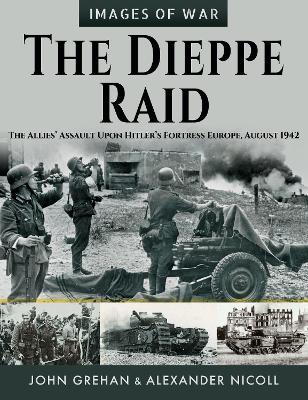Images of War
4 total works
By early 1944, offensives undertaken by the United States armed forces had driven the Japanese from many of their conquests in the south and central Pacific. The next American move was to sever Tokyo's communications with the remaining Japanese garrisons and interdict the supplies of raw materials essential to Japan's war effort. Before this could be achieved it was considered essential to eliminate the land-based air forces in the Philippines which were regarded as too powerful to by-pass.
The American plan was to land on the eastern Philippine island of Leyte and, once fully established there, to move against the island of Mindoro. At this point, US forces would then launch their main assault upon Luzon and the Philippine capital, Manila.
On 20 October 1944, the US Sixth Army began landing on Leyte's eastern coast, supported by the US Navy's 3rd and 7th fleets, which were assisted by ships from the Royal Australian Navy. The Japanese were aware that the Americans were poised to attack the Philippines and planned to draw the American warships into one last great battle to try and stave off the otherwise inevitable defeat.
Over the course of the following three days, the two naval forces engaged in four separate engagements. Involving more than 360 ships and 200,000 naval personnel, the battle was the greatest naval encounter of the Second World War and possibly the largest naval battle in history.
The result was disastrous for the Japanese who lost three battleships, four aircraft carriers, ten cruisers and eleven destroyers, along with almost 300 aircraft - the greatest loss of ships and crew the Japanese had ever experienced. In _Battle of Leyte Gulf_, the actions of the warships as well as the accompanying amphibious landings on Leyte by the US Sixth Army are vividly revealed through a dramatic collection of photographs depicting the ships, sailors, airmen and soldiers who made history.
The American plan was to land on the eastern Philippine island of Leyte and, once fully established there, to move against the island of Mindoro. At this point, US forces would then launch their main assault upon Luzon and the Philippine capital, Manila.
On 20 October 1944, the US Sixth Army began landing on Leyte's eastern coast, supported by the US Navy's 3rd and 7th fleets, which were assisted by ships from the Royal Australian Navy. The Japanese were aware that the Americans were poised to attack the Philippines and planned to draw the American warships into one last great battle to try and stave off the otherwise inevitable defeat.
Over the course of the following three days, the two naval forces engaged in four separate engagements. Involving more than 360 ships and 200,000 naval personnel, the battle was the greatest naval encounter of the Second World War and possibly the largest naval battle in history.
The result was disastrous for the Japanese who lost three battleships, four aircraft carriers, ten cruisers and eleven destroyers, along with almost 300 aircraft - the greatest loss of ships and crew the Japanese had ever experienced. In _Battle of Leyte Gulf_, the actions of the warships as well as the accompanying amphibious landings on Leyte by the US Sixth Army are vividly revealed through a dramatic collection of photographs depicting the ships, sailors, airmen and soldiers who made history.
The miracle' of Dunkirk is one of the most inspiring stories of all time. The British Expeditionary Force had been all but surrounded, and, with the French armies collapsing on all sides, it appeared that Britain was about to suffer the heaviest defeat in its history.
When Winston Churchill's War Cabinet finally accepted that the Battle of France had been lost, preparations were made to try and rescue as many soldiers as possible from one of the few ports left open to the British Expeditionary Force - Dunkirk.
So rushed and chaotic was the retreat to the Channel coast, with thousands of guns, vehicles and tanks being abandoned, there was little time for soldiers to consider taking photographs of the shocking scenes of death and destruction which surrounded them. Yet images do exist of the ships and boats of all descriptions which braved the bombs and guns of the German Air Force to rescue Britain's only field army from the clutches of Hitler's panzer divisions.
One man in particular, Sub-Lieutenant John Rutherford Crosby, a member of the crew of the minesweeper, and converted Clyde paddle steamer, HMS Oriole, left a legacy of dramatic images. These include the never-to-be-forgotten scenes of long lines of tired and anxious troops stretching into the sea and of bombs exploding on the packed beaches - all with his own personal little camera.
Other images in this book paint a vivid and memorable picture, as no words ever could, of the greatest evacuation of troops under fire.
When Winston Churchill's War Cabinet finally accepted that the Battle of France had been lost, preparations were made to try and rescue as many soldiers as possible from one of the few ports left open to the British Expeditionary Force - Dunkirk.
So rushed and chaotic was the retreat to the Channel coast, with thousands of guns, vehicles and tanks being abandoned, there was little time for soldiers to consider taking photographs of the shocking scenes of death and destruction which surrounded them. Yet images do exist of the ships and boats of all descriptions which braved the bombs and guns of the German Air Force to rescue Britain's only field army from the clutches of Hitler's panzer divisions.
One man in particular, Sub-Lieutenant John Rutherford Crosby, a member of the crew of the minesweeper, and converted Clyde paddle steamer, HMS Oriole, left a legacy of dramatic images. These include the never-to-be-forgotten scenes of long lines of tired and anxious troops stretching into the sea and of bombs exploding on the packed beaches - all with his own personal little camera.
Other images in this book paint a vivid and memorable picture, as no words ever could, of the greatest evacuation of troops under fire.
After the astonishing Japanese successes of 1941 and early 1942, the Allies began to fight back. After victories at Guadalcanal, Coral Sea, Midway and other islands in the Pacific, by 1944, the Japanese had been pushed back onto the defensive. Yet there was no sign of an end to the war, as the Japanese mainland was beyond the reach of land-based heavy bombers. So, in the spring of 1944, the focus of attention turned to the Mariana Islands - Guam, Saipan and Tinian - which were close enough to Tokyo to place the Japanese capital within the operational range of the new Boeing B-29 Superfortress.
The attack upon Saipan, the most heavily-defended of the Marianas, took the Japanese by surprise, but over the course of more than three weeks, the 29,000 Japanese defenders defied the might of 71,000 US Marines and infantry, supported by fifteen battleships and eleven cruisers. The storming of the beaches and the mountainous interior cost the US troops dearly, in what was the most-costly battle to date in the Pacific War.
Eventually, after three weeks of savage fighting, which saw the Japanese who refused to surrender being burned to death in their caves, the enemy commander, Lieutenant General Saito, was left with just 3,000 able-bodied men and he ordered them to deliver a final suicide banzai charge. With the wounded limping behind, along with numbers of civilians, the Japanese overran two US battalions, before the 4,500 men were wiped out. It was the largest banzai attack of the Pacific War.
As well as placing the Americans within striking distance of Tokyo, the capture of Saipan also opened the way for General MacArthur to mount his invasion of the Philippines and resulted in the resignation of the Japanese Prime Minister Tojo. One Japanese admiral admitted that 'Our war was lost with the loss of Saipan'. This is a highly illustrated story of what US General Holland Smith called 'the decisive battle of the Pacific offensive'. It was, he added, the offensive that 'opened the way to the Japanese home islands'.
The attack upon Saipan, the most heavily-defended of the Marianas, took the Japanese by surprise, but over the course of more than three weeks, the 29,000 Japanese defenders defied the might of 71,000 US Marines and infantry, supported by fifteen battleships and eleven cruisers. The storming of the beaches and the mountainous interior cost the US troops dearly, in what was the most-costly battle to date in the Pacific War.
Eventually, after three weeks of savage fighting, which saw the Japanese who refused to surrender being burned to death in their caves, the enemy commander, Lieutenant General Saito, was left with just 3,000 able-bodied men and he ordered them to deliver a final suicide banzai charge. With the wounded limping behind, along with numbers of civilians, the Japanese overran two US battalions, before the 4,500 men were wiped out. It was the largest banzai attack of the Pacific War.
As well as placing the Americans within striking distance of Tokyo, the capture of Saipan also opened the way for General MacArthur to mount his invasion of the Philippines and resulted in the resignation of the Japanese Prime Minister Tojo. One Japanese admiral admitted that 'Our war was lost with the loss of Saipan'. This is a highly illustrated story of what US General Holland Smith called 'the decisive battle of the Pacific offensive'. It was, he added, the offensive that 'opened the way to the Japanese home islands'.
As dawn was breaking on the morning of 19 August 1942, Allied troops leapt ashore to the east and west of the French port of Dieppe. These were British commandoes accompanied by U.S. Rangers, tasked to silence the German gun batteries that flanked Dieppe. Other troops - the men of the 2nd Canadian Division - landed closer to Dieppe to capture the German positions that overlooked the port while, minutes later, the main body of the predominantly Canadian assaulting force began clambering from landing craft that had run onto the beach along Dieppe's seafront. This was the start of Operation Jubilee, the Allies' most ambitious assault upon Hitler's so-called Fortress Europe - it quickly became a bloodbath.
The early months of 1942 had been difficult ones for Prime Minister Churchill. Stalin was demanding action in Western Europe to lessen the pressure of the 280 German divisions that were bearing down upon Stalingrad. Roosevelt was insisting that U.S. soldiers must start fighting the Germans in Europe, and Mackenzie King, the Canadian Prime Minister, desperately needed Canadian troops to become involved in the war to keep his politically divided nation together. Churchill's response to these measures was to authorise a �super-raid' upon German-held territory, and the target selected by the planners was Dieppe.
Apart from the notable success of No.4 Commando, the raid was a disaster with more than 50 per cent of the 6,086 men who landed being killed, wounded, or taken prisoner, plus all the Churchill tanks landed in support of the infantry suffered mechanical failure or were shelled into smoking wrecks. Yet amid the scenes slaughter, of confusion, and communication breakdown, were acts of almost unimaginable heroism, ingenuity, determination, and self-sacrifice to which the awarding of two Victoria Crosses paid a worthy tribute. There were also special missions associated with the raid, the details of which remained a closely guarded secret until long after the war.
This book opens a window on Operation Jubilee, allowing the reader a rare insight into the death and destruction inflicted upon the Allied force during just a few hours, and of the damage done to Dieppe itself, with many of the photographs being taken by the victorious German defenders. The raid saw the heaviest casualty figures experienced by Canadians in the Second World War, and the photographs in this book are a stark reminder of that fateful day in late summer of 1942.
The early months of 1942 had been difficult ones for Prime Minister Churchill. Stalin was demanding action in Western Europe to lessen the pressure of the 280 German divisions that were bearing down upon Stalingrad. Roosevelt was insisting that U.S. soldiers must start fighting the Germans in Europe, and Mackenzie King, the Canadian Prime Minister, desperately needed Canadian troops to become involved in the war to keep his politically divided nation together. Churchill's response to these measures was to authorise a �super-raid' upon German-held territory, and the target selected by the planners was Dieppe.
Apart from the notable success of No.4 Commando, the raid was a disaster with more than 50 per cent of the 6,086 men who landed being killed, wounded, or taken prisoner, plus all the Churchill tanks landed in support of the infantry suffered mechanical failure or were shelled into smoking wrecks. Yet amid the scenes slaughter, of confusion, and communication breakdown, were acts of almost unimaginable heroism, ingenuity, determination, and self-sacrifice to which the awarding of two Victoria Crosses paid a worthy tribute. There were also special missions associated with the raid, the details of which remained a closely guarded secret until long after the war.
This book opens a window on Operation Jubilee, allowing the reader a rare insight into the death and destruction inflicted upon the Allied force during just a few hours, and of the damage done to Dieppe itself, with many of the photographs being taken by the victorious German defenders. The raid saw the heaviest casualty figures experienced by Canadians in the Second World War, and the photographs in this book are a stark reminder of that fateful day in late summer of 1942.



